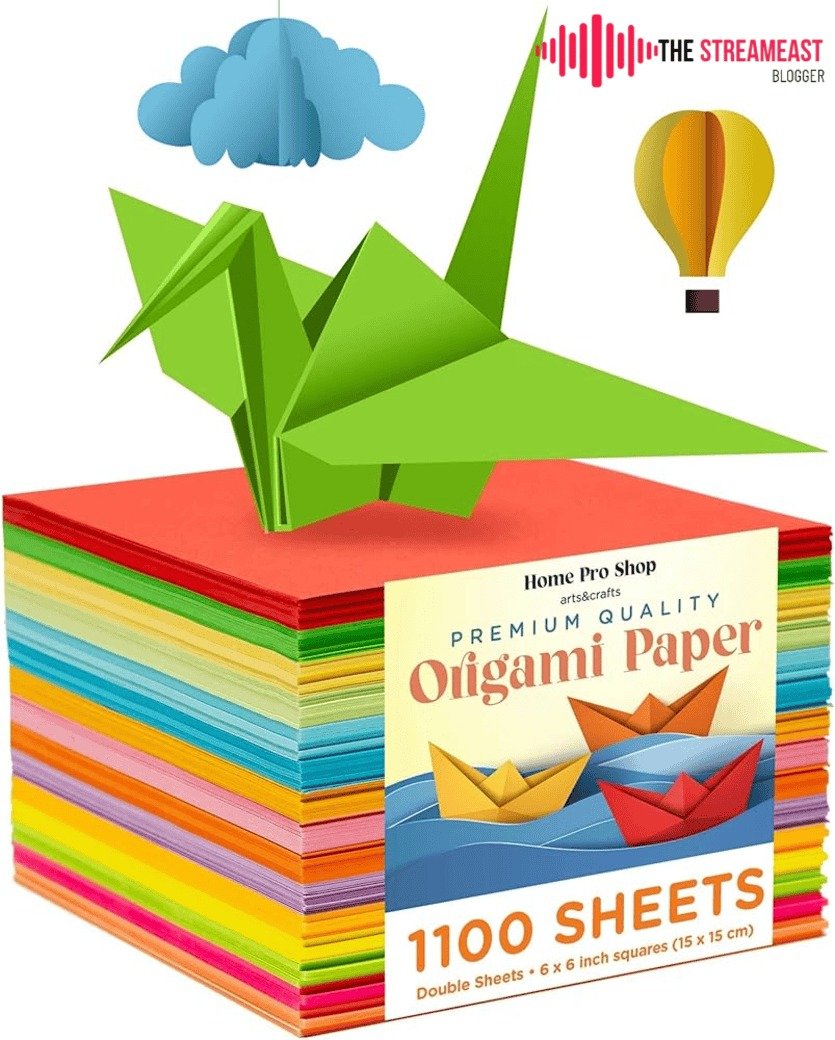Introduction to Origami Paper
Origami paper has long been associated with the traditional Japanese art of paper folding. This fascinating art form has gained popularity across the globe, inspiring people to create intricate designs and figures with just a single sheet of paper. The right origami paper is essential for mastering this craft, making it easier to fold, shape, and transform into art. In this guide, we’ll delve into the basics of origami paper, its types, how to choose it, and tips for creating your own masterpieces.
What is Origami Paper?
Origami paper is a specially designed type of paper intended for folding into various shapes and figures. Unlike regular paper, origami paper is thin and easy to fold, allowing it to hold creases well without tearing. The size, color, and texture of origami paper can vary, making it a versatile choice for beginners and experienced folders alike.
History of Origami and Origami Paper
Origami, derived from the Japanese words “ori” (folding) and “kami” (paper), has been a significant cultural art form in Japan for centuries. Although it originated in Japan, paper-folding techniques can also be traced back to China. Origami paper was first crafted in Japan and has since become popular worldwide. The use of origami_paper has evolved to include artistic, therapeutic, and educational purposes.
Types of Origami Paper
There are various types of origami_paper, each offering unique characteristics for specific designs. Here are some popular types:
- Kami Paper
Kami is the most commonly used origami_paper and is readily available in many craft stores. It’s lightweight and easy to fold, making it perfect for beginners. - Washi Paper
Washi is traditional Japanese paper, known for its natural fibers and textured surface. It’s a bit thicker than standard origami_paper, making it ideal for complex designs. - Chiyogami or Yuzen Paper
This type of origami_paper is decorated with intricate patterns, often inspired by traditional Japanese motifs. Chiyogami paper is a favorite among artists and enthusiasts due to its beautiful designs. - Foil Origami_Paper
Foil paper has a metallic sheen, adding a touch of elegance to any origami project. However, it requires precision, as it’s delicate and easy to tear. - Double-Sided Origami_Paper
Double-sided paper has different colors or patterns on each side, offering versatility and depth to origami figures.
How to Choose the Right Origami Paper
Selecting the right origami_paper can enhance your experience and help you create more precise designs. Here’s a guide on how to choose origami_paper based on your needs:
- For Beginners: Kami or standard origami_paper is perfect for beginners. It’s easy to work with, affordable, and widely available.
- For Complex Designs: If you’re working on intricate designs, Washi or foil paper may be a better choice as they’re durable and hold folds well.
- For Artistic Projects: Choose patterned paper, like Chiyogami, to add beauty and uniqueness to your designs.
Why is Origami Paper Special?
Origami_paper is designed to be thin, lightweight, and resilient, which helps with precise folds. Unlike regular paper, origami_paper’s quality makes it suitable for creating lasting art pieces. It’s available in many colors, sizes, and patterns, allowing for endless creative possibilities. Origami_paper is not only limited to traditional uses but has become a staple in arts and crafts around the world.
Benefits of Using Origami Paper
The use of origami_paper in crafting has numerous benefits beyond artistic expression. Here are some advantages:
- Promotes Focus and Patience: Creating designs with origami_paper requires attention to detail, which can improve focus and patience.
- Enhances Creativity: Origami encourages people to experiment and create their own designs, stimulating creativity.
- Therapeutic Benefits: Many people find folding origami_paper to be a relaxing and stress-relieving activity.
- Improves Fine Motor Skills: Folding paper improves hand-eye coordination and fine motor skills, especially in children.
Essential Tips for Working with Origami Paper
Whether you’re a beginner or experienced, these tips can help you create beautiful pieces with origami_paper:
- Start Simple: Begin with easy folds and gradually move to complex designs.
- Crease Sharpness: Use a ruler or a bone folder to make sharp creases, as this makes your design look cleaner.
- Work on a Flat Surface: A flat and clean surface helps in making precise folds.
- Follow Instructions Carefully: Many designs have specific steps, so carefully following instructions will help you achieve the desired outcome.
Popular Origami Paper Designs for Beginners
If you’re new to origami, here are some easy and popular designs you can create with origami_paper:
- Origami Crane
The crane is a symbol of peace and is a classic beginner’s origami project. - Origami Heart
A sweet and simple design, perfect for gift decorations or expressing affection. - Origami Frog
The frog is a fun and easy design that even kids can enjoy creating. - Origami Flower
Create beautiful paper flowers to brighten up your space. - Origami Boat
The boat is an easy design and a favorite for kids learning origami.
Advanced Origami Designs Using Specialized Origami Paper
For those who have experience with origami, here are some complex designs to challenge yourself with:
Origami Dragon
This intricate design requires patience and precision, often using Washi paper for durability.
Modular Origami
Modular origami involves creating multiple identical shapes and connecting them to form a larger design.
Origami Rose
A more challenging flower design that looks incredibly lifelike.
Kusudama Ball
This 3D structure is created by assembling multiple units, perfect for decorative purposes.
How to Preserve and Display Your Origami Paper Creations
After you’ve created beautiful origami pieces, it’s essential to preserve and display them properly. Here’s how:
Use Clear Varnish: Applying a light coat of clear varnish can help protect your designs.
Frame Your Work: Consider framing flat designs, such as paper cranes, to protect and display them.
Create a Shadow Box: For 3D origami pieces, a shadow box offers protection and turns your creation into art.
Store in a Dry Place: Paper can be delicate, so store origami pieces in a dry place to avoid moisture damage.

FAQs About Origami Paper
Q1: What size of origami_paper should I use as a beginner?
A1: The standard size of origami_paper for beginners is typically 6 x 6 inches. It’s large enough for easy folding and handling.
Q2: Can I use regular paper for origami?
A2: Yes, you can use regular paper for origami, but it might not hold creases as well as origami_paper. It’s best to start with origami_paper to make folding easier.
Q3: Is origami_paper eco-friendly?
A3: Many types of origami_paper, especially those made from natural fibers like Washi, are eco-friendly. Always check labels if eco-friendliness is a priority.
Q4: Where can I buy origami_paper?
A4: Origami_paper is available at most craft stores, online retailers, and specialty stores that carry Japanese goods.
Q5: What are the best origami_paper brands?
A5: Popular origami_paper brands include Aitoh, Tuttle, and Yasutomo, known for quality and variety in patterns and colors.
Conclusion
Origami_paper is more than just a craft supply; it’s a gateway to a world of creativity, patience, and cultural appreciation. From traditional cranes to complex 3D structures, origami_paper offers endless possibilities for artistic expression. Whether you’re a beginner or an experienced folder, choosing the right origami_paper can enhance your experience and lead to stunning creations. Start your origami journey today with the right paper and see where your creativity takes you!




